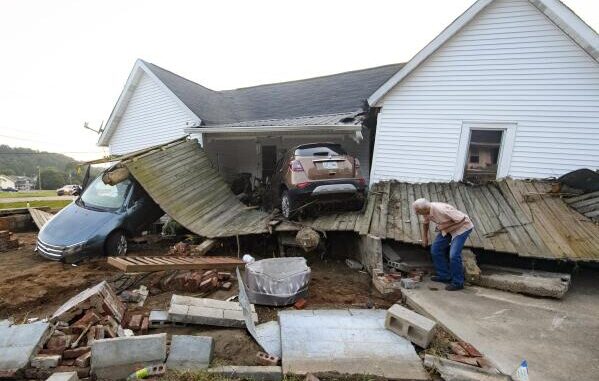
WVU Researchers Help Flood-Ravaged Communities Rebuild with Tools for Recovery and Resilience…
MORGANTOWN, W.Va. — In response to the increasing frequency and severity of flooding across West Virginia, researchers at West Virginia University (WVU) are leading efforts to help communities recover, rebuild, and prepare for future disasters.
Following the catastrophic 2016 floods that devastated towns like Rainelle and White Sulphur Springs, WVU experts have been working closely with local residents, public officials, and nonprofit partners to develop practical, community-based solutions for long-term flood resilience.
“Flooding is no longer an occasional problem—it’s becoming a regular part of life for many West Virginians,” said Dr. Jamie Shinn, assistant professor of geography at WVU. “Our goal is to ensure communities are not only able to recover from these events but are better prepared to handle the next one.”
WVU’s research emphasizes the importance of local voices in designing effective recovery strategies. After conducting extensive interviews and focus groups in flood-affected areas, researchers found that while state and federal aid is essential, it’s often slow to arrive. In contrast, local networks—such as churches, community groups, and neighbors—mobilized quickly to provide emergency support.
“These communities have incredible strength,” said Dr. Nicolas Zegre, director of the Mountain Hydrology Laboratory. “But they need resources, infrastructure, and planning tools that match the scale of the threat they’re facing.”
To meet that need, WVU is developing the West Virginia Flood Resilience Framework—an innovative digital toolkit designed to help all 286 flood-prone communities in the state. Funded by the National Science Foundation, the framework includes risk maps, planning templates, community engagement guides, and educational resources for residents and local governments.
One of the key components is participatory mapping, where community members work alongside researchers to identify flood-prone areas and co-create solutions. The project also includes training programs to help high school students and local leaders assess vulnerabilities in their towns.
“Involving local people in the planning process makes the solutions stronger and more sustainable,” said Aaron Maxwell, director of the WV GIS Technical Center and a lead researcher on the project. “It’s not just about telling communities what to do—it’s about working with them to create lasting change.”
Beyond research, WVU is also engaging in direct relief efforts. In early 2025, the university coordinated a campus-wide donation drive to provide hygiene kits, cleaning supplies, and other essentials to flood victims in southern West Virginia. Students, faculty, and staff volunteered time and resources to support recovery efforts on the ground.
The work is already making a difference. In Rainelle, one of the towns hardest hit in 2016, local leaders have begun integrating WVU’s data and tools into municipal planning and grant applications for infrastructure upgrades.
As flooding becomes an increasingly urgent threat due to climate change, WVU researchers say their approach could serve as a model for other Appalachian states—and even the nation.
“We’re not just responding to disaster,” said Shinn. “We’re building a foundation for resilience that communities can carry into the future.”
Be the first to comment